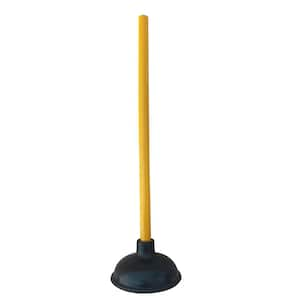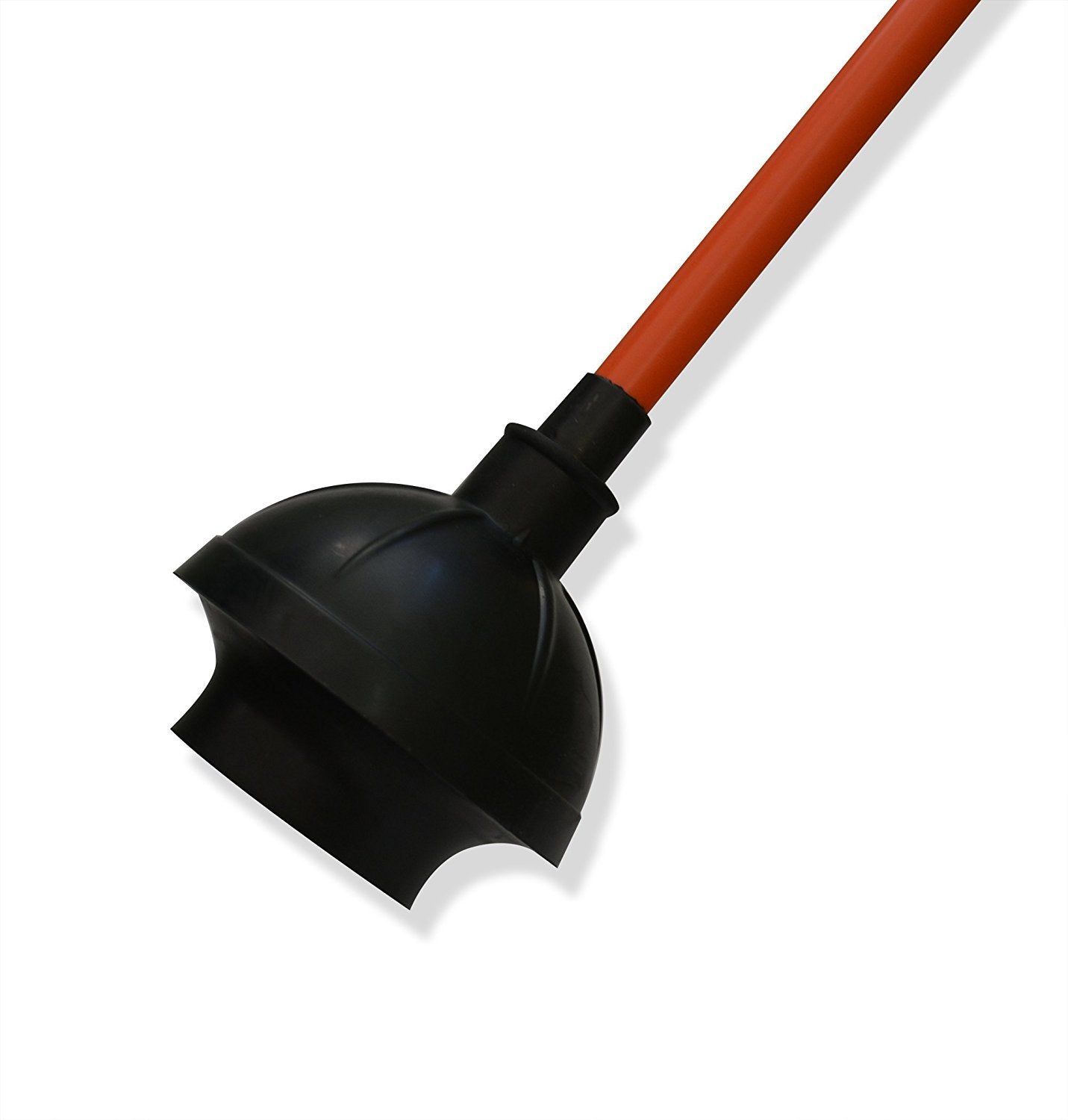Using Plunger and Drain Cleaner: Effective Strategies
Using Plunger and Drain Cleaner: Effective Strategies
Blog Article
Listed here below you will find a bunch of worthwhile ideas all about How to Unclog Your Sink with a Plunger.

Intro
Proper maintenance of house drains is necessary for preventing blockages and making certain smooth water flow. One of the secret devices in every homeowner's toolkit is the bettor, alongside numerous drain cleansers designed to deal with persistent clogs properly. This post discovers just how to make use of plungers and drain cleaners successfully to keep your drains pipes moving openly.
Section 1: Comprehending Bettors
Sorts of Plungers
There are several kinds of plungers available, each developed for different types of drains and clogs. One of the most typical kinds consist of cup bettors, flange plungers, and accordion plungers.
Just How Plungers Job
Plungers deal with the concept of developing stress and suction to dislodge clogs. When effectively used over a drain, they produce a vacuum that can pull out particles or break up obstructions.
Choosing the Right Plunger
Picking the best bettor relies on the type of drainpipe and the nature of the obstruction. Cup plungers are ideal for sinks and tubs, while flange plungers are much better matched for toilets due to their style.
Typical Mistakes with Bettors
Avoiding these errors ensures efficient plunging: inappropriate seal around the drain, inadequate pressure, and unclear surrounding particles.
Area 2: Using Plungers Successfully
Prep work
Prior to plunging, guarantee the plunger covers the drainpipe entirely and creates a limited seal. Clear any visible debris around the drain opening.
Method
Begin with mild diving motions to build suction. Increase stress gradually, using a stable rhythm. Repeat as needed till the drain removes.
Fixing Tips
If plunging doesn't work, try readjusting the seal, applying petroleum jelly for a better seal, or making use of a various sort of plunger.
Area 3: Comprehending Drain Cleaners
Types of Drainpipe Cleaners
Drain cleaners can be chemical or enzymatic. Chemical cleaners make use of strong chemicals to dissolve blockages, while chemical cleansers make use of natural enzymes to break down organic matter.
Exactly How Drain Cleansers Job
Chemical cleansers respond with obstructions to liquify them, while chemical cleansers break down natural materials like hair and grease without hurting pipes.
Safety Considerations
Always put on handwear covers and eye protection when utilizing chemical drainpipe cleaners. Make certain appropriate ventilation and adhere to producer guidelines meticulously.
Eco-Friendly Alternatives
Think about using vinegar and baking soft drink or enzyme-based cleaners for eco-friendly choices that are safer for pipes and the setting.
Area 4: Making Use Of Drainpipe Cleansers Successfully
Application Techniques
Pour chemical cleansers straight right into the drain opening. Enable them to work for the advised time prior to flushing with warm water. Enzymatic cleansers must sit overnight.
Preventative measures
Prevent blending various types of cleaners, as this can create poisonous fumes. Never use chemical cleaners combined with a bettor, as spilling can take place.
Dealing With Stubborn Blockages
For consistent blockages, think about utilizing a plumbing snake or calling a professional plumbing to prevent damage to pipelines.
Verdict
To conclude, comprehending how to use bettors and drainpipe cleansers effectively is necessary for keeping healthy plumbing systems. By choosing the right tools and methods, home owners can deal with small blockages and prevent significant plumbing problems down the line.
How to Use a Plunger to Unclog a Drain
The humble plunger is a simple yet effective tool for breaking clogs in sinks, tubs and toilets. This handy tool is easy to use. You can make the most of its power if you understand how it works. Ready to dive in? Here’s what you need to know.
Safety First!
Never use a plunger with drain chemicals. Water will splash as you work, and the chemicals can spatter, burning skin and eyes. It’s a good idea to use rubber gloves and wear safety goggles when you work on a clog.
Choose the Right Tool for the Job
Plungers come in two different styles. Sinks, bathtubs and showers require a cup plunger. Like its name suggests, the rubber end is shaped like a cup. Use a flange plunger on toilets. These plungers have a rubber funnel extending from the cup. A plunger needs to be big enough to cover the drain.
Ready, Set, Plunge!
Coat the rim: Coat the plunger rim with petroleum jelly. This helps make a better seal.
Block outlets: Hold a wet rag over nearby outlets such as the overflow vent or the drain in a second sink.
Release air: Insert the plunger at an angle into the water. Water will displace air in the cup. A water-filled cup is more forceful than one filled with air.
Keep the plunger upright: Hold the plunger perpendicular to the drain. Use fast, forceful strokes, but make the first stroke gentle. The first stroke can create a splash if the cup still contains air. Thrust the plunger 15 to 20 times.
Snap off the plunger: The final stroke should be a strong upward motion that ends when the plunger snaps off the drain.
Repeat the process: you may need to repeat this sequence several times. When the water drains away, your work is done. High-five! https://plumbernw.com/blog/how-to-use-a-plunger-to-unclog-a-drain/

Application Techniques
Pour chemical cleansers straight right into the drain opening. Enable them to work for the advised time prior to flushing with warm water. Enzymatic cleansers must sit overnight.
Preventative measures
Prevent blending various types of cleaners, as this can create poisonous fumes. Never use chemical cleaners combined with a bettor, as spilling can take place.
Dealing With Stubborn Blockages
For consistent blockages, think about utilizing a plumbing snake or calling a professional plumbing to prevent damage to pipelines.
Verdict
To conclude, comprehending how to use bettors and drainpipe cleansers effectively is necessary for keeping healthy plumbing systems. By choosing the right tools and methods, home owners can deal with small blockages and prevent significant plumbing problems down the line.
How to Use a Plunger to Unclog a Drain
The humble plunger is a simple yet effective tool for breaking clogs in sinks, tubs and toilets. This handy tool is easy to use. You can make the most of its power if you understand how it works. Ready to dive in? Here’s what you need to know.
Safety First!
Never use a plunger with drain chemicals. Water will splash as you work, and the chemicals can spatter, burning skin and eyes. It’s a good idea to use rubber gloves and wear safety goggles when you work on a clog.
Choose the Right Tool for the Job
Plungers come in two different styles. Sinks, bathtubs and showers require a cup plunger. Like its name suggests, the rubber end is shaped like a cup. Use a flange plunger on toilets. These plungers have a rubber funnel extending from the cup. A plunger needs to be big enough to cover the drain.
Ready, Set, Plunge!
Coat the rim: Coat the plunger rim with petroleum jelly. This helps make a better seal. Block outlets: Hold a wet rag over nearby outlets such as the overflow vent or the drain in a second sink. Release air: Insert the plunger at an angle into the water. Water will displace air in the cup. A water-filled cup is more forceful than one filled with air. Keep the plunger upright: Hold the plunger perpendicular to the drain. Use fast, forceful strokes, but make the first stroke gentle. The first stroke can create a splash if the cup still contains air. Thrust the plunger 15 to 20 times. Snap off the plunger: The final stroke should be a strong upward motion that ends when the plunger snaps off the drain. Repeat the process: you may need to repeat this sequence several times. When the water drains away, your work is done. High-five! https://plumbernw.com/blog/how-to-use-a-plunger-to-unclog-a-drain/

We were shown that report on Tips on How to Effectively Use a Plunger from a good friend on a different blog. Enjoyed our piece of writing? Please quickly share it. Let others find it. Thank-you for taking the time to read it.
Check It Out Report this page